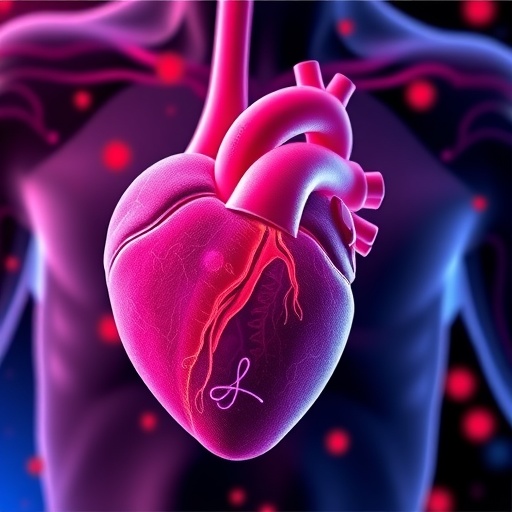Groundbreaking Discovery Reveals Key Gene Responsible for Heart Defects in Down Syndrome
In a remarkable scientific advancement, researchers at the Gladstone Institutes have unveiled a gene that plays a pivotal role in causing congenital heart defects associated with Down syndrome. After decades of speculation surrounding the genetic underpinnings of these heart issues, the identification of HMGN1 marks a significant breakthrough in understanding and potentially correcting one of the most severe health challenges faced by individuals with this condition.
Nearly 50% of babies born with Down syndrome, also referred to as trisomy 21, are affected by significant heart defects. These congenital malformations often necessitate surgical intervention during the initial months following birth. Previous research indicated that the causative factor stemmed from an additional copy of chromosome 21, the hallmark of Down syndrome. However, pinpointing the specific gene responsible for the heart anomalies remained elusive. The innovative approach taken by the Gladstone team combines advanced stem cell technology and artificial intelligence, leading them to the identification of HMGN1 as a significant contributor to these heart defects.
Historically, the challenge in identifying the gene behind congenital heart defects in Down syndrome rested in the complexity of the human genome. With numerous genes present on chromosome 21, it was challenging to determine which specifically was responsible for the cardiac issues observed. Scientists traditionally relied on cell samples from separate individuals, creating uncertainty due to inherent genetic variations. However, by focusing on individuals with mosaic Down syndrome—who possess a mix of cells with differing chromosome copies—the team was able to eliminate such uncertainties and establish a clearer pathway for investigation.
Leveraging induced pluripotent stem (iPS) cell technology, the researchers derived heart cells from mosaic individuals, allowing them to observe how the additional genetic material affected these cells’ development. This unprecedented methodology provided a unique opportunity to directly contrast cells that either possessed two or three copies of chromosome 21. Notably, the analysis revealed significant differences in the morphology and function of the heart cells, sparking curiosity regarding the gene responsible for this shift.
As they delved deeper, the researchers employed a CRISPR-based technology to activate each of the candidate genes found on chromosome 21, observing their effects on normal heart cells. This meticulous process yielded a plethora of data that required sophisticated analysis. To decode this information, the team collaborated with experts in artificial intelligence, who developed algorithms to interpret the results effectively. This collaboration unveiled HMGN1 as the gene that, when overexpressed, caused heart cells to mimic the abnormal characteristics associated with Down syndrome.
The identification of HMGN1 not only solves an age-old mystery, but it also opens up potential avenues for therapeutic intervention. Subsequent studies involving animal models demonstrated that when the levels of HMGN1 were reduced, the typical heart defects correlated with Down syndrome were effectively eliminated. This discovery validates the researchers’ hypothesis that the presence of three copies of HMGN1 is responsible for the cardiac anomalies experienced by these individuals.
Beyond HMGN1, scientists are beginning to explore the possibility that other genes also contribute to the cardiac malformations associated with Down syndrome. Early indicators suggest that genes such as DYRK1 may play a role alongside HMGN1, highlighting the complexity of genetic interactions that lead to congenital heart disease. As research progresses, it will be crucial to delineate the interplay between these genes, especially in the context of developing targeted therapies that could mitigate complications faced by patients.
This new understanding of the genetic basis for heart defects in Down syndrome also bodes well for future research into other genetic disorders characterized by chromosomal abnormalities. The Gladstone team’s findings provide a critical framework for examining how alterations in chromosomal number can influence disease pathology, which could translate into groundbreaking insights for various genetic and developmental disorders.
The implications of this research extend beyond merely treating heart defects. As scientists continue to refine techniques for controlling the expression of genes involved in congenital heart disease, there exists the potential to develop preventive strategies, possibly even during the prenatal stage. This could fundamentally alter the landscape of how congenital disabilities are approached, providing new hope for families affected by Down syndrome.
To summarize, the discovery of HMGN1 restructuring the landscape of congenital heart defects in Down syndrome emphasizes the potential of integrating cutting-edge genomic technologies with advanced computational methods. The collaborative efforts between researchers at Gladstone, stem cell science, and artificial intelligence illustrate the future of medicine rests on interdisciplinary cooperation, pushing the boundaries of what we understand about genetic disorders.
Thanking the Gladstone Institutes for their visionary exploration and groundbreaking research, we now stand on the precipice of potentially life-altering therapies, underscoring the importance of continued investment in scientific research. This monumental step forward represents not just a significant scientific achievement but also a ray of hope for individuals living with Down syndrome and their families.
With emerging results like these, the future may hold considerable promise for genetically targeted therapies that could revolutionize treatment protocols and improve the quality of life for those affected by congenital heart disease related to chromosomal disorders.
As we move forward, the continued exploration into the genetic foundations of various health conditions remains critical. Advancements in this field of study will undoubtedly usher in a new era of precision medicine, paving the way for more profound insights into not only Down syndrome but a plethora of genetic disorders. The ongoing commitment to decoding the complexity of the human genome is a necessity for building a healthier future for generations to come.
Subject of Research: HMGN1 in Congenital Heart Defects Related to Down Syndrome
Article Title: Myocardial reprogramming by HMGN1 underlies heart defects in trisomy 21
News Publication Date: October 22, 2025
Web References: Gladstone Institutes
References: Nature DOI: 10.1038/s41586-025-09593-9
Image Credits: Gladstone Institutes
Keywords
Down syndrome | Genetics | Stem cell research | Artificial intelligence | Drug development | Cardiology | Congenital heart disease




